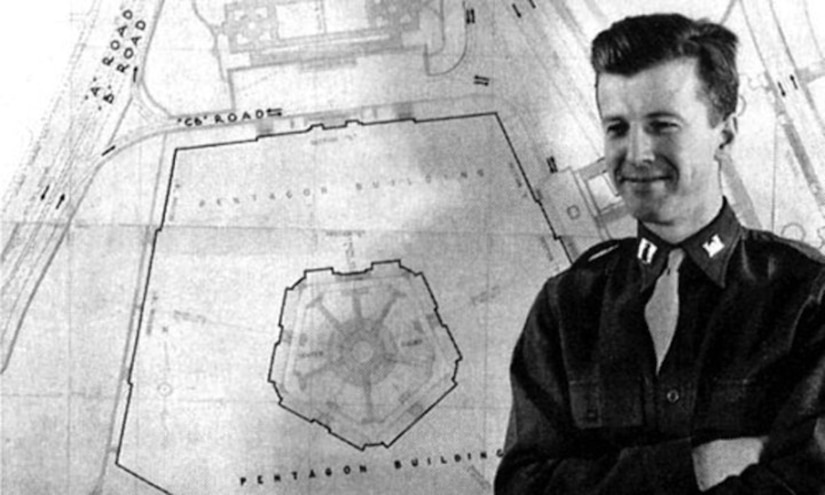10 Things You Probably Didn't Know About the Pentagon
10 Things You Probably Didn't Know About the Pentagon
April 16, 2024 |
1. Why is the Pentagon, you know, a Pentagon?
The land the Pentagon was first planned to go on was bordered on five sides by roads, so the architects designed a five-sided building. President Franklin Delano Roosevelt was worried putting the building at that location would interfere with the view of Washington from Arlington Cemetery, so he chose to move it to its present location, but he kept the five-sided design.
2. Sept. 11 has a double significance for the Pentagon.
Builders broke ground for the Pentagon on Sept. 11, 1941, exactly 60 years before the Sept. 11, 2001, terrorist attacks.
3. The Pentagon is big. Reallllly big.

4. The builders were frugal with their materials.
During construction, the builders were able to conserve enough steel to build a battleship. And the 689,000 tons of sand and gravel used to make the building's reinforced concrete – including 41,000 concrete pilings – came from the nearby Potomac River.
5. Until 2011, there was only one passenger elevator in the Pentagon. And it was reserved for the defense secretary.
A 17-year-long renovation project that finished in 2011 saw 70 passenger elevators installed in the building. Until then, people who couldn't use stairs used long ramps to move between floors. The ramps are still there, but the rumors of office chair races are greatly exaggerated.
6. That renovation project? It probably saved thousands of lives.

7.The Pentagon was the first desegregated building in Virginia.
The Pentagon was designed when segregation was the law in Virginia. But Roosevelt had signed an executive order the previous year, which forbade discrimination against government workers on the basis of race, creed, color or national origin. So the Pentagon became the only building in Virginia where segregation was not enforced. Because segregation was state law, the Pentagon was built with twice as many bathrooms as needed for a desegregated building of its size.
8. It was constructed in record time.
More than 15,000 workers were on site around the clock, and wartime office space shortages meant that workers moved in before the Pentagon was fully finished. Construction finished on Jan. 15, 1943, just 16 months after it started. Speed costs money, though: Initially budgeted at $35 million, the final cost was $63 million, more than $900 million in today's money.
9. The same guy oversaw construction of the Pentagon and the atomic bomb.
Col. Leslie Groves, an Army Corps of Engineer officer, took charge of the Pentagon's construction in August 1941. He worked six days a week in his office in Washington. Then on Sundays, he would visit the project he felt most needed his personal attention. Groves later said of his time at the Pentagon that he was "hoping to get to a war theater so I could find a little peace." Instead, he was assigned to direct the Manhattan Project – America's effort to build an atomic bomb.
10. For a while, there was a secret crash pad in the Pentagon.

(This Article was Published on defense.gov)
Categories
Recent Posts




